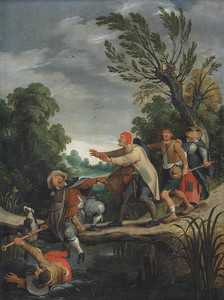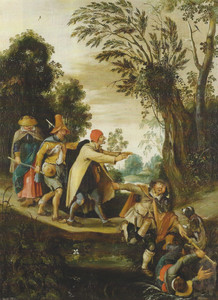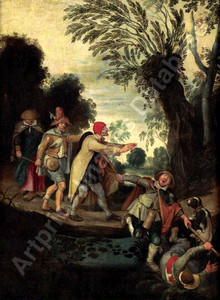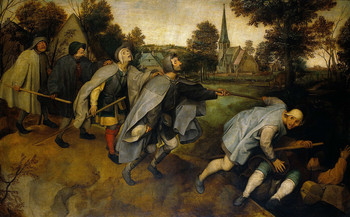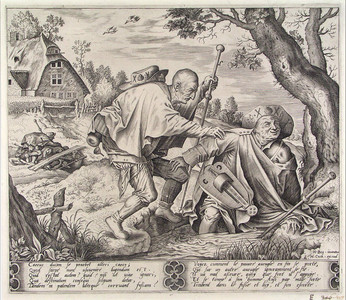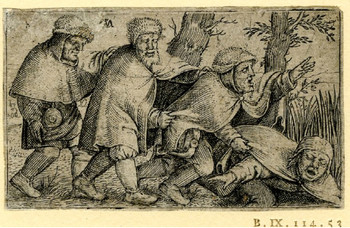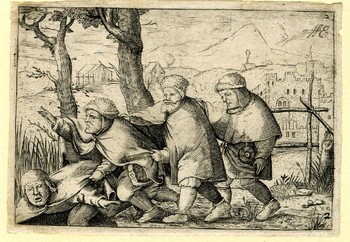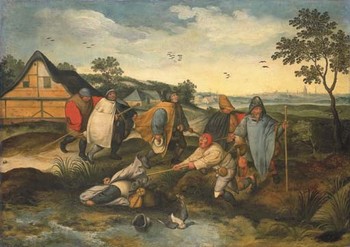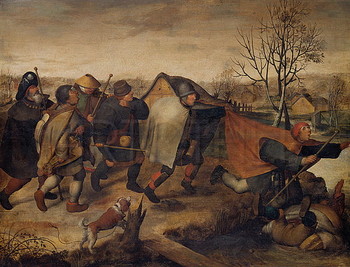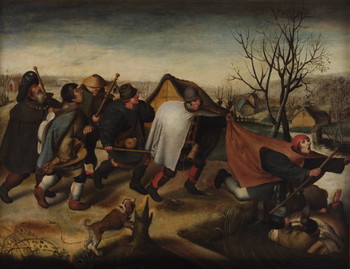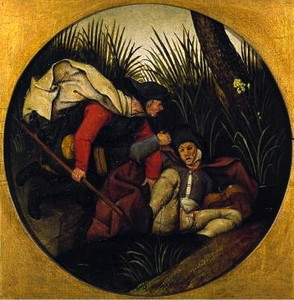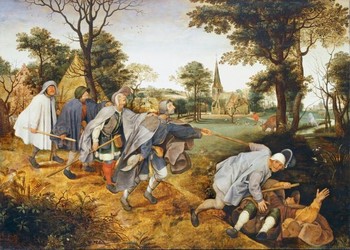Sebastiaen Vrancx
The blind leading the blind
Oil on panel : 53,5 X 36,5 cm
Monogrammed “SV” on the lid of the tankard of the second figure in line
Formerly in 1987 in London, with Gallery Johnny van Haeften
Sold at Sotheby’s London, 6/12/07
For 50.900 £ = 70.725 €
This is a comparative item
Painting for Sale
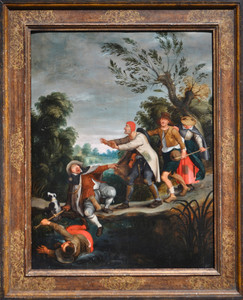
Vrancx, Attributed to Sebastiaen, SOLD
"The blind leading the blind"
Comparative paintings
Click photos for more details

